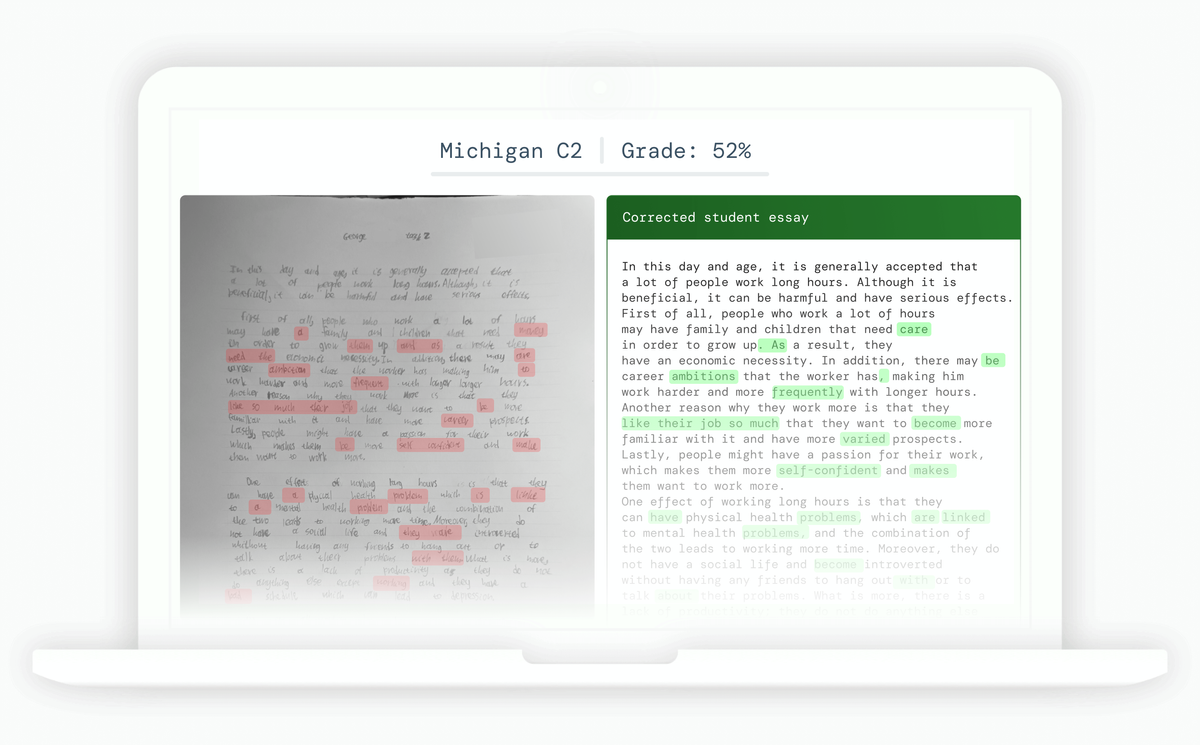Mastering Efficient Feedback

My name is Eleni and I have taught foreign languages in France, England, and Greece. And I’ve often found it challenging to teach and correct writing, especially figuring out how to fit it smoothly into my lesson plans. I knew that for my students to stay engaged, writing needed to connect well with the other parts of the lesson. Early on, my students showed me that if I got it right, they would respond positively. Finding these links—like between grammar and structure—was hard at first, but it’s become easier since I started using AI tools.
Still, the challenge of correcting each piece of writing remains, especially when I’m preparing students for specific exams. Giving good feedback can make a big difference in their learning, but it takes time, and time is limited. Figuring out how to give this feedback is another puzzle: Should I just give a few hints on grammar and vocabulary, or spend the time to go deeper and link it to exam requirements, providing valuable insights and detailed feedback? We all know that deeper feedback is best! But how can we finally use the new technology we’ve been hearing about but aren’t yet using in classrooms?
📈 Why Timely Feedback Matters
Research shows that when students get feedback 24-48 hours after finishing their work, they learn faster and remember more. Timely feedback doesn’t just correct mistakes; it gives students clear tips on how to improve next time.
💬 Types of Feedback Students Need
For writing, feedback on grammar and vocabulary is helpful—but students also need advice on tone, structure, and clarity. Correcting all these areas can be tough, especially in larger classes, but technology and AI tools can help.
✨ How Technology & AI Can Support Your Teaching
Using technology and AI in the classroom can make giving feedback much easier. For example, tools like corrected.ai let you give line-by-line feedback, pointing out errors in grammar, vocabulary, and structure so that students understand each change. Grammarly is great for helping students work on grammar and style on their own, while Quizlet lets them review vocabulary with flashcards and quizzes. These tools support your teaching by handling repetitive tasks, allowing you to focus on the feedback that matters most. You get to keep both quality and efficiency.
🔑 Takeaway
High-quality feedback doesn’t have to take up all your time. With AI tools like corrected.ai for detailed corrections, Grammarly for grammar help, and Quizlet for vocabulary, you can raise higher your standards using your time most effectively. These tools let you focus on the feedback that really matters, making a greater impact on your students’ learning.



